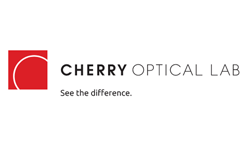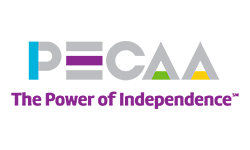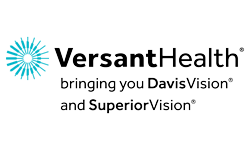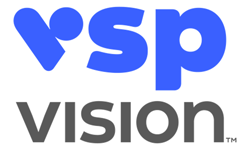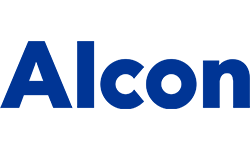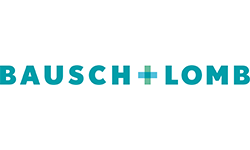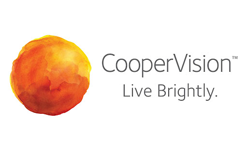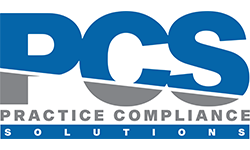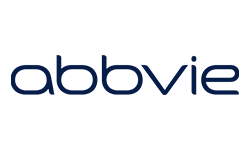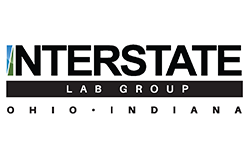- About EHR
- Certified EHR Systems for Optometrists
- Donald H. Evans, O.D. Award for PCO Graduating Senior
- Electronic Health Records (EHR) in the Optometric Practice
- Medicare EHR meaningful use attestation steps
- Medicare e-Rx Incentives/Penalites
- Ten Things Optometrists Should Know About EHRs
- Ten Things Optometrists Should Do Right Now to Implement EHRs
- PECOS
Meaningful Use
Secretary Sebelius Announces Final Rules To Support ‘Meaningful Use’ of Electronic Health Records
WASHINGTON - U.S. Department of Health and Human Services Secretary Kathleen Sebelius on July 13 announced final rules to help improve Americans' health, increase safety and reduce health care costs through expanded use of electronic health records (EHR).
"For years, health policy leaders on both sides of the aisle have urged adoption of electronic health records throughout our health care system to improve quality of care and ultimately lower costs," Secretary Sebelius said. "Today, with the leadership of the President and the Congress, we are making that goal a reality."
Under the Health Information Technology for Economic and Clinical Health (HITECH) Act of 2009, eligible health care professionals and hospitals can qualify for Medicare and Medicaid incentive payments when they adopt certified EHR technology and use it to achieve specified objectives. One of the two regulations announced today defines the "meaningful use" objectives that providers must meet to qualify for the bonus payments, and the other regulation identifies the technical capabilities required for certified EHR technology.
Announcement of today's regulations marks the completion of multiple steps laying the groundwork for the incentive payments program. With "meaningful use" definitions in place, EHR system vendors can ensure that their systems deliver the required capabilities, providers can be assured that the system they acquire will support achievement of "meaningful use" objectives, and a concentrated five-year national initiative to adopt and use electronic records in health care can begin.
"This is a turning point for electronic health records in America, and for improved quality and effectiveness in health care," said David Blumenthal, M.D., National Coordinator for Health Information Technology. "In delivering on the goals that Congress called for, we have sought to provide the leadership and coordination that are essential for a large, technology-based enterprise. At the same time, we have sought and received extensive input from the health care community, and we have drawn on their experience and wisdom to produce objectives that are both ambitious and achievable."
Two companion final rules were announced today. One regulation, issued by the Centers for Medicare & Medicaid Services (CMS), defines the minimum requirements that providers must meet through their use of certified EHR technology in order to qualify for the payments. The other rule, issued by the Office of the National Coordinator for Health Information Technology (ONC), identifies the standards and certification criteria for the certification of EHR technology, so eligible professionals and hospitals may be assured that the systems they adopt are capable of performing the required functions.
As much as $27 billion may be expended in incentive payments over ten years. Eligible professionals may receive as much as $44,000 under Medicare and $63,750 under Medicaid, and hospitals may receive millions of dollars for implementation and meaningful use of certified EHRs under both Medicare and Medicaid.
The CMS rule announced today makes final a proposed rule issued on Jan, 13, 2010. The final rule includes modifications that address stakeholder concerns while retaining the intent and structure of the incentive programs. In particular, while the proposed rule called on eligible professionals to meet 25 requirements (23 for hospitals) in their use of EHRs, the final rules divides the requirements into a "core" group of requirements that must be met, plus an additional "menu" of procedures from which providers may choose. This "two track" approach ensures that the most basic elements of meaningful EHR use will be met by all providers qualifying for incentive payments, while at the same time allowing latitude in other areas to reflect providers' needs and their individual path to full EHR use.
"CMS received more than 2,000 comments on our proposed rule," said Marilyn Tavenner, Principal Deputy Administrator of CMS. "Many comments were from those who will be most immediately affected by EHR technology - health care providers and patients. We carefully considered every comment and the final meaningful use rules incorporate changes that are designed to make the requirements achievable while meeting the goals of the HITECH Act."
Requirements for meaningful use incentive payments will be implemented over a multi-year period, phasing in additional requirements that will raise the bar for performance on IT and quality objectives in later years. The final CMS rule specifies initial criteria that eligible professionals (EPs) and eligible hospitals, including critical access hospitals (CAHs), must meet. The rule also includes the formula for the calculation of the incentive payment amounts; a schedule for payment adjustments under Medicare for covered professional services and inpatient hospital services provided by EPs, eligible hospitals and CAHs that fail to demonstrate meaningful use of certified EHR technology by 2015; and other program participation requirements.
Key changes in the final CMS rule include:
- Greater flexibility with respect to eligible professionals and hospitals in meeting and reporting certain objectives for demonstrating meaningful use. The final rule divides the objectives into a "core" group of required objectives and a "menu set" of procedures from which providers may choose any five to defer in 2011-2012. This gives providers latitude to pick their own path toward full EHR implementation and meaningful use.
- An objective of providing condition-specific patient education resources for both EPs and eligible hospitals and the objective of recording advance directives for eligible hospitals, in line with recommendations from the Health Information Technology Policy Committee.
- A definition of a hospital-based EP as one who performs substantially all of his or her services in an inpatient hospital setting or emergency room only, which conforms to the Continuing Extension Act of 2010
- CAHs within the definition of acute care hospital for the purpose of incentive program eligibility under Medicaid.
CMS' and ONC's final rules complement two other recently issued HHS rules. On June 24, 2010, ONC published a final rule establishing a temporary certification program for health information technology. And on July 8, 2010 the Office for Civil Rights announced a proposed rule that would strengthen and expand privacy, security, and enforcement protections under the Health Insurance Portability and Accountability Act of 1996.
As part of this process, HHS is establishing a nationwide network of Regional Extension Centers to assist providers in adopting and using in a meaningful way certified EHR technology.
"Health care is finally making the technology advances that other sectors of our economy began to undertake years ago," Dr. Blumenthal said. "These changes will be challenging for clinicians and hospitals, but the time has come to act. Adoption and meaningful use of EHRs will help providers deliver better and more effective care, and the benefits for patients and providers alike will grow rapidly over time."
A CMS/ONC fact sheet on the rules is available at http://www.cms.gov/EHRIncentivePrograms/
Technical fact sheets on CMS's final rule are available at http://www.cms.gov/EHRIncentivePrograms/
A technical fact sheet on ONC's standards and certification criteria final rule is available at http://healthit.hhs.gov/standardsandcertification.
Core elements
(Mandatory objectives. Health care practitioners must meet all 15 of the core objectives to achieve meaningful use of electronic health records. Measures are assigned for each objective.)
Objective: Record patient demographics (sex, race, ethnicity, date of birth, preferred language).
Measure:More than 50 percent of patients' demographic data recorded as structured data.
Objective: Record vital signs and chart changes (height, weight, blood pressure, body mass index, growth charts for children).
Measure: More than 50 percent of patients two years of age or older have height, weight, and blood pressure recorded as structured data.
Objective: Maintain up-to-date problem list of current and active diagnoses.
Measure:More than 80 percent of patients have at least one entry as structured data.
Objective: Maintain active medication list.
Measure:More than 80 percent of patients have at least one entry recorded as structured data.
Objective: Maintain active medication allergy list.
Measure:More than 80 percent of patients have at least one entry recorded as structured data.
Objective: Record smoking status for patients 13 years of age of older.
Measure: More than 50 percent of patients 13 years of age or older have smoking status recorded as structured data.
Objective: For individual professionals, provide patients with clinical summaries for each office visit.
Measure: Clinical summaries provided to patients for more than 50 percent of all office visits within three business days.
Objective: On request, provide patients with an electronic copy of their health information (including diagnostic test results, problem list, medication list, medication allergies).
Measure: More than 50 percent of requesting patients receive electronic copy within three business days.
Objective: Generate and transmit permissible prescriptions electronically.
Measure: More than 40 percent are transmitted electronically using certified EHR technology.
Objective: Computer provider order entry (CPOE) for medication orders.
Measure: More than 30 percent of patients with at least one medication in their medication ordered through CPOE.
Objective: Implement drug-drug and drug-allergy interaction checks.
Measure: Functionality is enabled for these checks for the entire reporting period.
Objective: Implement capability to electronically exchange key clinical information among providers and patient-authorized entities.
Measure:Perform at least one test of EHR's capacity to electronically exchange information.
Objective: Implement one clinical decision support rule and ability to track compliance with the rule.
Measure:One clinical decision support rule implemented.
Objective: Implement systems to protect privacy and security of patient data in the EHR.
Measure:Conduct or review a security risk analysis, implement security updates as necessary and correct identified security deficiencies.
Objective: Report clinical quality measure to CMS or states.
Measure:For 2011, provide aggregate numerator and denominator through attestation; for 2012, electronically submit measures.
Menu elements
(Health care practitioners must meet five of the 10 core menu objectives to achieve meaningful use of electronic health records. Measures are assigned for each objective.)
Objective: Implement drug formulary checks.
Measure:Drug formulary check system is implemented and access maintained to at least one internal or external drug formulary for the entire reporting period.
Objective: Incorporate clinical laboratory test results into EHRs as structured data.
Measure:More than 40 percent of clinical laboratory test results whose results are in positive/negative or numerical format are incorporated into EHRs as structured data.
Objective: Generate lists of patients by specific conditions to use for quality improvement, reduction of disparities, research or outreach.
Measure:Generate at least one listing of patients with specific condition.
Objective: Use EHR technology to identify patient-specific education resources and provide to the patient as appropriate.
Measure:More than 10 percent of patients are provided patient-specific education resources.
Objective: Perform medical reconciliation between care settings.
Measure:Medication reconciliation is performed for more than 50 percent of transitions of care.
Objective: Provide summary of care record for patients referred or transitioned to another provider or setting.
Measure:Summary of care record is provided for more than 50 percent of patient transitions or referrals.
Objective: Submit electronic immunization data to immunization registries or immunization information systems.
Measure:Perform at least one test of data submission and follow-up submission (where registries can accept electronic submission).
Objective: Submit electronic syndromic surveillance data to public health agencies.
Measure: Perform at least one test of data submission and follow-up submission (where public health agencies can accept electronic submission).
Objective: Send reminders to patients (per patient preference) for preventative and follow-up care.
Measure:More than 20 percent of patients 65 years of age or older or five years if age or younger are sent appropriate reminders.
Objective: Provide patients with timely electronic access to their health information (including laboratory results, problem list, medication lists, medication allergies).
Measure:More than 10 percent of patients are provided electronic access to information within four days of it being updated in the EHR.



